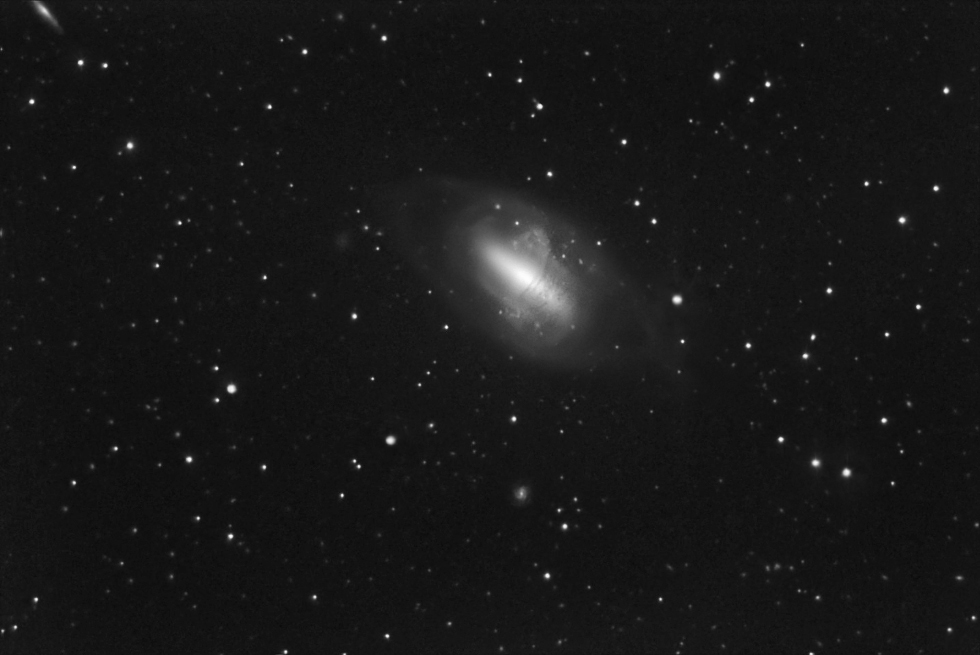

Imagen LRGB de la galaxia NGC 2685.
La fotografía fue terminada en febrero de 2008.
Los ratios finales de exposición son : 315:135:135:165 min
LRGB image of the galaxy NGC 2685.
Color was finally added on february 2008
LRGB ratios are: 315:135:135:165 min.

R.A. 08 55 35
Dec. +58 44 03
Esta es una de las galaxias más extrañas que se conocen. Al contrario que la inmensa mayoría galaxias que tienen un eje de simetría, la 2685 tiene dos ejes perpendiculares.
El cuerpo principal es una forma típica de SB0 pero tiene unos gigantescos anillos de materia los cuales se ven oscuros en absorción cuando cruzan delante de la galaxia y claros cuando pasan por detrás y reflejan la luz.
Tanto la galaxia como los anillos están inmersos en un halo de materia de muy bajo brillo visible en la fotografía . No se sabe si los anillos circundan la galaxia o por el contrario empiezan en ella y salen hacia fuera formando una espiral.
La 2685 tiene una mg. de 12,1 y unas dimensiones de 5 x 3 arc. min. y es visible con telescopios a partir de 15 cm.
Las diferentes exposiciones se tomaron los pasados días 12 y 13 de enero de 2007 desde Ayllón (Segovia).
Son 5 horas y 15 min. de exposición acumulada (21 sub-frames de 900 sg) con un SC de 280 m.m. a f/10 y una ST-8XME con sistema de óptica adaptativa AO-7 ( 1 pixel = 0.66 sg. de arco).
El procesado de este objeto es laborioso en extremo y difícil pues existe una gran diferencia de brillo entre el núcleo de la galaxia y los anillos polares.
Se utilizaron para ello los programas CCDOPS, MaxIm DC y Photoshop CS2.
Ngc 2685 is perhaps one of the strangest galaxies in the sky.
This fantastic object has two axes of symmetry while most galaxies have only one.The central spindle looks like a normal SB0 galaxy but several huge helical filaments of material surround the spindle. We do not know if these filaments form a complete circle to the spindle or they somehow start on the spindle and spiral outwards.
Its mg. is 12.1 and it extends 5 x 2 arc. min. It shows in telescopes larger than 15 cms.
The CCD exposures were taken the 12th and 13th of january 2007 from Ayllón (Segovia) and it is a 5 hours and 15 min. total combined exposure (21 sub-exposures of 900 sc. each).
The telescope used is a SC 11" at f/10 and the ST-8 XME using the AO-7 system (1 pixel = 0.66 arcsec.).
I find the processing of this object a very difficult one because of the great difference of light intensity and contrast between rings and spindle.
There is also a dim outer halo surrounding the whole structure which is visible in the image.